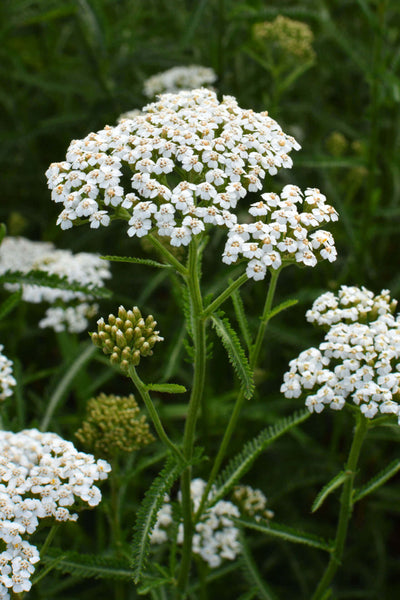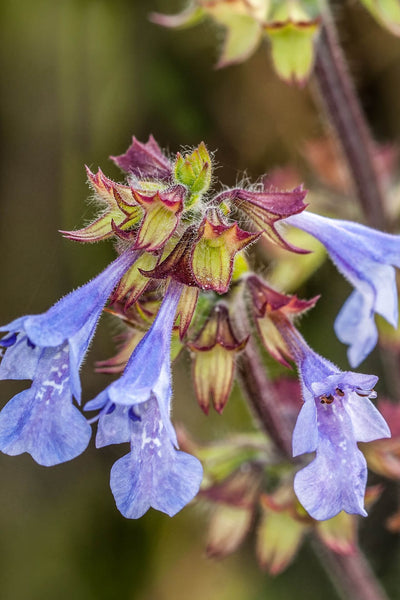10 Plants That Thrive In Drought: Modern Gardener Easy Landscape Tips
Considering the problem of water scarcity, choosing the right plants for your garden is a question of sustainability as well as beauty. Drought-tolerant plants are one of the essentials in modern landscaping, as, once established, they require minimal water.
Additionally, these plants conserve water, require less upkeep, and provide the greenery and blooming plants that are the hallmarks of any garden. A thriving eco-friendly garden can be created using the following 10 drought hardy plants such as lavender, that survive even the toughest of conditions.
Lavender ( Lavandula spp)
Precious and purple, Lavender not only adds beauty to your garden. She is also renowned for her fragrance and drought resilience. This gem is from the Mediterranean, and mirrors her beauty with her full sunshine and drained soil. After establishment, Lavender requires very small amounts of water. Lavender silvery leaves produce beautiful, aromatic lavender carbs that are pollinators such as bees and butterflies.
Lavender also attracts pollinators. This pollinator wins the silvery leaves of our gardens. Lavender also attracts and contributes eco toilets to your garden and attracts pollinators. Lavender will produce beautiful and aromatic blooms for your garden and also help furnish and beautify your garden.
Succulents (Agave, Sedum, Echeveria)
One of the most recognizable types of drought-resistant plants are succulents. These plants are able to survive extended drought periods due to water stored in their fleshy leaves. For more artistic, low-maintenance ground covers, both agave, sedum, and echeveria in a multitude of colors, shapes, and sizes are perfect. These plants are also great choices for container gardening, and therefore are ideal for both large and small areas.
Yarrow (Achillea spp.)
Another great option for drought tolerant gardening is yarrow. It has feathery foliage, and the clusters of flowers can be very vibrant adding nice color and texture to the garden. It also does great in dry gardens, needing very little maintenance in garden beds with well drained soils, making yarrow perfect for the gardeners looking for a low care, low water use, beautiful garden.
Russian Sage (Perovskia atriplicifolia)
Another great option for dry gardens is a plant with beautiful delicate purple flowers called Russian Sage. It is an aromatic shrub that is native to central Asia and perfect for dry, sloping areas that need a bit of color. Russian sage also does well in dry, sandy soils and is very drought tolerant. Because of all of these reasons, along with long blooming flowers, Russian sage is a perfect addition to dry or low water gardens.
Agastache (Agastache spp.)
Agastache is a hardy perennial loved for its colorful, nectar-rich blooms. It attracts beneficial insects like bees and hummingbirds, and it needs very little water. Agastache is pink, purple, or orange, and it adds color to drought tolerant gardens. Agastache has fragrant leaves, and is a good choice for gardens focused on the sense of smell.
California Poppy (Eschscholzia californica)
Native to the American Southwest, the California Poppy is a dazzling orange wildflower. This plant flourishes in poor, dry soil and, once established, will require almost no water. It self-seeds and will quickly spread in arid conditions. The Poppy is also very pretty and will help a garden stand out with its colorful blooms.
Oregano (Origanum spp.)
Oregano is a Mediterranean herb that, like the California poppy, also thrives in dry conditions. This herb is a wonderful garden plant, and its lack of water needs makes it an excellent plant for gardens that are drought focused. Oregano likes to be in a well-drained and sun-exposed area and is also very easy to grow, so it makes a good project for both beginner and expert gardeners.
Sage (Salvia spp.)
Sage belongs to the mint family and contains a number of different plants, all of which have their own variations of different leaf colors and flowers. Many sag plants do really well in dry conditions, and can handle dry, sunny areas. Because of their good looking flowers and pleasant leaves, they have become a water wise favorite. Sage also attracts water wise pollinators like bees, which is a bonus for supporting the ecosystem!
Cacti (Various species)
Sage and other succulents easily become the most popular drought tolerant plants. These unique succulents come in a massive variety of shapes and sizes and have evolved their stems to be water storage tanks.
Absolutely dry locations and deserts become their homes enthusiastically, while others die off. Other emerging succulents have also become popular, like the football saguaro or prickly pear, but they all easily form a diverse and interesting low water garden.
Lantana, or Lantana spp
This species ranges in color from yellow and orange to pink and even purples, denoting the triumvirate of yellow, orange, and pink. Lantana is exceptionally low-water and heat tolerant and, once established, incredibly resilient and requires less watering. With the capacity of heat tolerance and the attractiveness to pollinators, Lantana is perfect to add color to drought-prone areas.
Why Choose Drought-Tolerant Plants?
The choice of drought tolerant species is also environmentally friendly, as many areas of the world, including this region, are dealing with water drought issues. These plants are modified to cope with and even thrive in areas with low rain. This also leads to less maintenance and watering costs, decreasing your bills due to the incorporation of these plants in the landscape.
Designing a Drought-Tolerant Garden
With drought resistance, the variety and beauty of a garden can also be achieved. They can come in many cultivars, such as succulents that are also visually striking, to ornamental grasses which provide soft textures. With xeriscaping, to form a sustainable and visually appealing garden, water practices must be efficient.
Keeping Your Drought-Tolerant Garden Healthy
- Use Mulch: Putting a layer of mulch around your plants prevents moisture loss, protecting the soil from drying out.
- Get the Most from Your Water: Installing a drip irrigation system. Water gets to the roots without evaporating or soaking the soil.
- Matching Plants and Watering: Plants that need similar amounts of moisture to the soil can be placed together, so all the plants receive the amount of water they need, while some plants don’t get too much.
Drought Resistant Plants at TN Nursery
Want to build a garden that is drought tolerant and dry to water maintenance? You can create this garden at TN Nursery, your online nursery, and have a variety of plants that are drought tolerant. They are perfect for any climate and will help create a garden that is beautiful and also conserves water.
FAQs
What are the most drought-tolerant plants?
Some of the most common plants that need a lot less water to survive include succulents, herbs, and plants that have met a lot of dry conditions in their lifetimes. Some succulents include agave, sedum, and echeveria. Lavender, oregano, and sage have met dry conditions as they are all herbs. Yarrow, and California Poppy are also plants that do just fine without a lot of water.
What plants are hardy in the desert?
Some plants have learned how to survive in the extreme drought of the desert, such as the saguaro cactus, prickly pear cactus, agave succulent, aloe succulent, creosote desert shrub, and desert marigold desert shrub, all of which are desert-dwelling plants, and are well adapted to desert conditions.
They have features like waxy, thick, and drought resistant leaves and stems, and a deep root system that helps them retrieve water from underground water sources. All of these plants are able to thrive and survive in the desert.
Which plant can survive in extremely dry conditions?
These plants are known for their ability to thrive in extremely dry conditions. Cacti, succulents, and Mediterranean shrubs such as lavender and oregano are known for their resilience and their ability to survive in dry, water-scarce environments.
What plant can survive the longest without water?
Cacti are often considered the best plants for surviving without water for extended periods due to their thick stems. Agave and aloe succulents also excel in extremely dry conditions due to fleshy leaves and water storage. These plants can go for weeks without water.
What plant needs the least amount of water?
Cacti require the least amount of moisture. They can survive in the most extreme conditions because their thick stems store a lot of water and their… Other plants that need little water and dry condition are also succulents such as agave and sedum. Water conservation gardens also need these kinds of plants.




